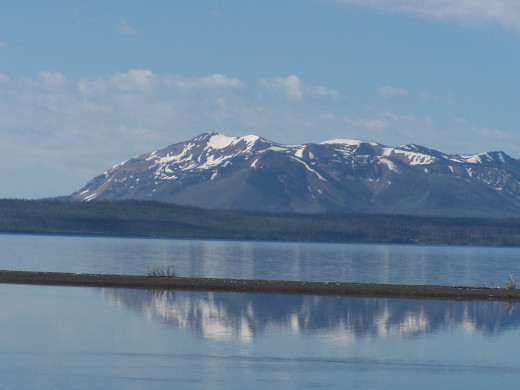How To Write A Setting For Your Novel Or Story
Some Great Examples
“That night I dreamed of two brown pelicans sailing low and flat over an inland bay in late autumn, the pouches under their beaks plump with fish. In the dream they continued north in their flight, across miles of sawgrass stiff with frost and bays that looked like hammered copper. They passed over a cluster of shrimp boats tied up at the docks in a coastal town, then followed a winding bayou into the heart of the Teche country. The pelicans turned in a wide circle over a swamp thick with gum trees and cypress snags, and sailed right across the home where Jimmie and I grew up.
Through the eyes of the birds I saw the purple rust on the tin roof of the house and the cypress boards that had turned the color of scorched iron from the dust and the smoke of stubble fires in the cane fields.”
James Lee Burke “Crusader’s Cross.”
Some writers will tell you that dialogue is the hardest part of writing. For this writer, setting is easily the greatest challenge. A good writer makes a setting vivid for the readers. Through the eyes of the writer, readers are able to plainly see where the scene and story are taking place as though they were truly standing there with the characters.
It is not easy, and perhaps it is harder for me because I am continually comparing my work with great authors who I admire, like James Lee Burke and his beautiful description of Louisiana.
The great writers make it look so easy, but I am sure that it is not. Consider the opening paragraph of John Steinbeck’s “The Grapes of Wrath:”
“To the red country and part of the gray country of Oklahoma, the last rains came gently, and they did not cut the scarred earth. The plows crossed and recrossed the rivulet marks. The last rains lifted the corn quickly and scattered weed colonies and grass along the sides of the roads so that the gray country and the dark red country began to disappear under a green cover. In the last of May the sky grew pale and the clouds that had hung in high puffs for so long in the spring were dissipated.”
No, it is not easy!
So how do they do it? How do they manage to paint such a picture that leaves the reader mopping his brow from the suggested heat and ducking for cover to avoid the imagined mosquitoes?
There are some techniques you can practice that will help you in this endeavor. You may not end up being the next Steinbeck but you will improve your creation of a setting.
LEARN FROM THE BEST
Using the two passages above as examples, ask yourself this question: what did these two talented writers do to make their scenes so concrete? What type of phrasing did they use? What in particular helped you to visualize the scene they painted with their words?
Some writers are especially strong in their settings. Besides the two I have already highlighted, you might check out the writings of Faulkner, Jack London or Katherine Mansfield. They are exceptionally strong in their crafting and you just might learn something from studying their style. The goal is not to write like them, for there is only one Burke. The goal is to unleash that which is inside of you and is waiting to be released with a flourish.
STOP AND ENVISION
Now take some time to think about the setting you wish to create. Picture it in your mind. If it is a place you have been to before, perhaps you have some photographs that you can look at. If you have not been there before, check out similar pictures online or in old books.
Remember scenes from your childhood or other past experiences. Think of your favorite park or the bedroom you slept in as a child. Grab hold of every detail and jot down notes to help you when you begin writing. I am a big believer in not re-inventing the wheel. There is no need to create a new scene when you have lived your life in an endless array of scenes.
Join me on my writing blog
- Artistry With Words | A topnotch WordPress.com site
Writing tips, suggestions, favorite sites, discussions and much, much more.
USE YOUR FIVE SENSES
Beginning with sight, write down every single image that comes to mind, whether it pertains to your story or not. Let your sight free-flow and make note of even the smallest of details.
Now do the same for taste, smell, sound and touch. We are brainstorming at this point and nothing is useless. You may not use all of your impressions in the story but you want a great number to choose from.
WHAT MOOD ARE YOU CREATING?
Think about the mood of your story or book. Once you have determined the mood you want to convey, then establish a setting that reflects that mood.
Is the mood somber and heavy? Then you don’t want radiant sunshine streaming through arched windows. Is the mood lighthearted? Then you don’t want the story to take place in a cancer ward of a hospital, unless….unless….you are incredibly talented. Ken Kesey pulled it off with “One Flew Over A Cuckoo’s Nest,” so anything is possible if you have game. J
DON’T STATE THE OBVIOUS IN A MUNDANE WAY
It was windy that day. It was hot that day. She was frightened. He was tall. All accurate statements but man alive they are boring.
In the paragraph mentioned above, Steinbeck not once tells us that it was hot. He allows his words and phrasing to do the job for him in exquisite fashion.
That should be your goal when painting your scene. Don’t tell us the house was messy. Describe the mess. Don’t tell us that the kitchen smelled from cat urine. Describe the smell. Don’t tell us that it was a dark and gloomy night. Instead, use the magic of language to make our skin crawl.

A good explanation
Was this helpful?
And That’s Really the Whole Point Now Isn’t It?
The magic of language!
The truly great writers allow their readers the time and space to make discoveries on their own. That’s’ what setting the scene is all about. Write it in such a way that allows the reader to walk through at their own pace and enjoy the surroundings. Never slam them in the head with the obvious. That is akin to insulting their intelligence, and a good writer never does that.
Never stoop lower than a level you feel comfortable at. In other words, do not dumb down a novel or story or article because you fear the reader cannot fathom that which you are telling them. Instead, improve your craft so that you facilitate the understanding of the reader.
Our job as writers is to entertain, inform, educate and dazzle. Our job is to strip bare, stun, manipulate and cajole. Our job is not to dumb down.
Never compromise quality because you think your readers will not understand. Have faith in your abilities to make your readers understand, and have faith also that they will rise up and meet the challenge.
2013 William D. Holland (aka billybuc)
“Helping writers to spread their wings and fly.”










